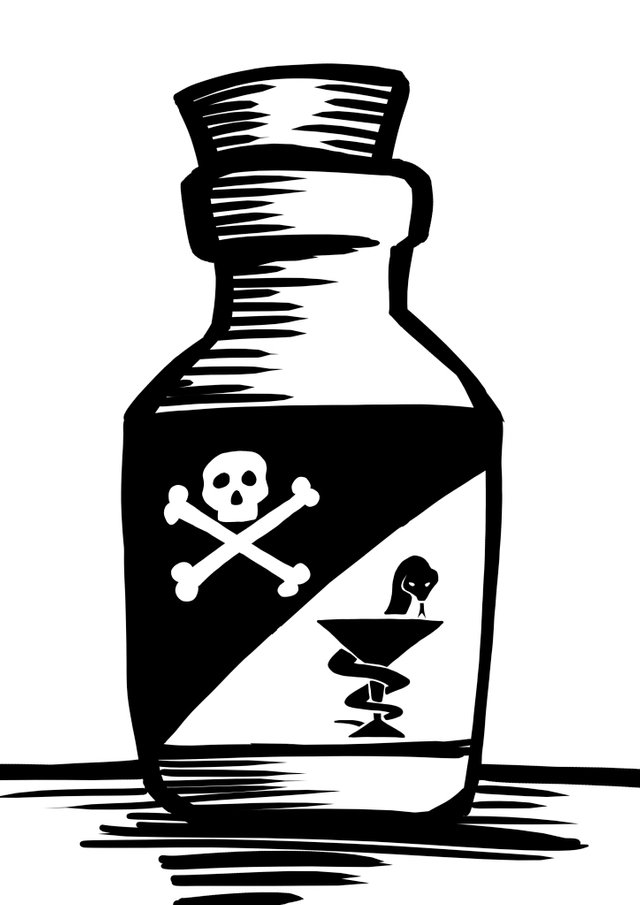Posology

Illustration by José Carlos Garcia
A woman once told me: "What attracts in you, are the same the things that ends up repelling"
It took me a long time to understand what she meant. To explain, let me start telling you a story.
Some time ago, I went 'Bleu', an exhibit of the works of the French artist Ives Klein. I went reluctantly, I must say, because it was, as the name says, an exhibit of monochromes. But what a surprise… it was impressive!
At the entrance wall several small canvas, all monochrome but in different shapes and colors, stood side by side forming a mind blowing composition. Mind blowing... that is a good way to describe the exhibit.
The following canvas and frames, all blue, were of incredible... depths. I wanted to jump in. Enter them.
Many things striked me at that exhibition. I have today, in my living room, a statue of the 'Venus de Milo', all blue, after the artist's idea.
In the last room, there was a couch to sit and admire two frames on the wall: one, all blue, like everything else in the exhibit. The other, covered with golden leaves. The contrast was, again, striking. But in a surprising way. Gold, which according to common sense ought attract us, repelled me. The blue, which I would expect to be drab, next to the golden one, attracted me. I couldn't explain why.
I also have a blue and a golden frame in my living room. To remind me that what looks drab, could draws us, and what should attract, sometimes repel.
I remembered that exhibition these days, when two friends, readers of the blog, asked me to write, again, about love. They think I write about love, although, to me, it is all just biology. But, as their wish is my command, here I go.
Love, you know, is said to be blind. I don't think love is blind. Infatuation! Infatuation, one of the stages of love, can blind. Literally. Luckyly, it has been found to be a biochemical process, with a maximum length of 6 months.
Evolutionarily, this pouring of hormones and neurotransmitters must have had the function of keeping two people together until they mate. As human females do not disclouse their fertile period, intercourse is never guarantee to produce offspring. To increase the odds, it was necessary to try more than once. But how to convince the male to stick around until fertilization? Or the female, for all it counts? By developing an inexplicable and irresistible attraction between the two. And who could do this? Love? No... biochemistry!
But after the rush is gone, the problems emerge. The conflicts of interests between men and women, each worried about spending the least possible amount of energy in the bring up of their child, are irreconcilable. It's every man for himself and… evolution for all. There is only so much biochemistry can do as well.
"What attracts in you, are the same the things that ends up repelling"... where have I heard it before? Yes! I remembered!
Paracelcius was a German physician who lived at the end of the 13th, beginning of the 14th century. In the fervor of the Renaissance, he studied poisons (an extremely requested expertise in those days) and before inventing homeopathy, he made very important considerations on the toxicity of the substances. He said: "Anything can be toxic. What differentiates the poison from the remedy, is the dose".
If what attracts in me is the same that ends up repelling, then there is only so much I can do to change. But change is not the answer. Dose! The dose is the answer!
Knowing to dose is the secret of love. And of everything else.
Excerpt from the book 'The Truth about Dogs and Cats'. Back to the syllabus
A new excerpt from the book - The Moult - A poetical biological tale about moving on
A new excerpt from the book - Men are all the same. And women too (Part I - the men)
A new excerpt from the book - Men are all the same. And women too (Part II - the women)